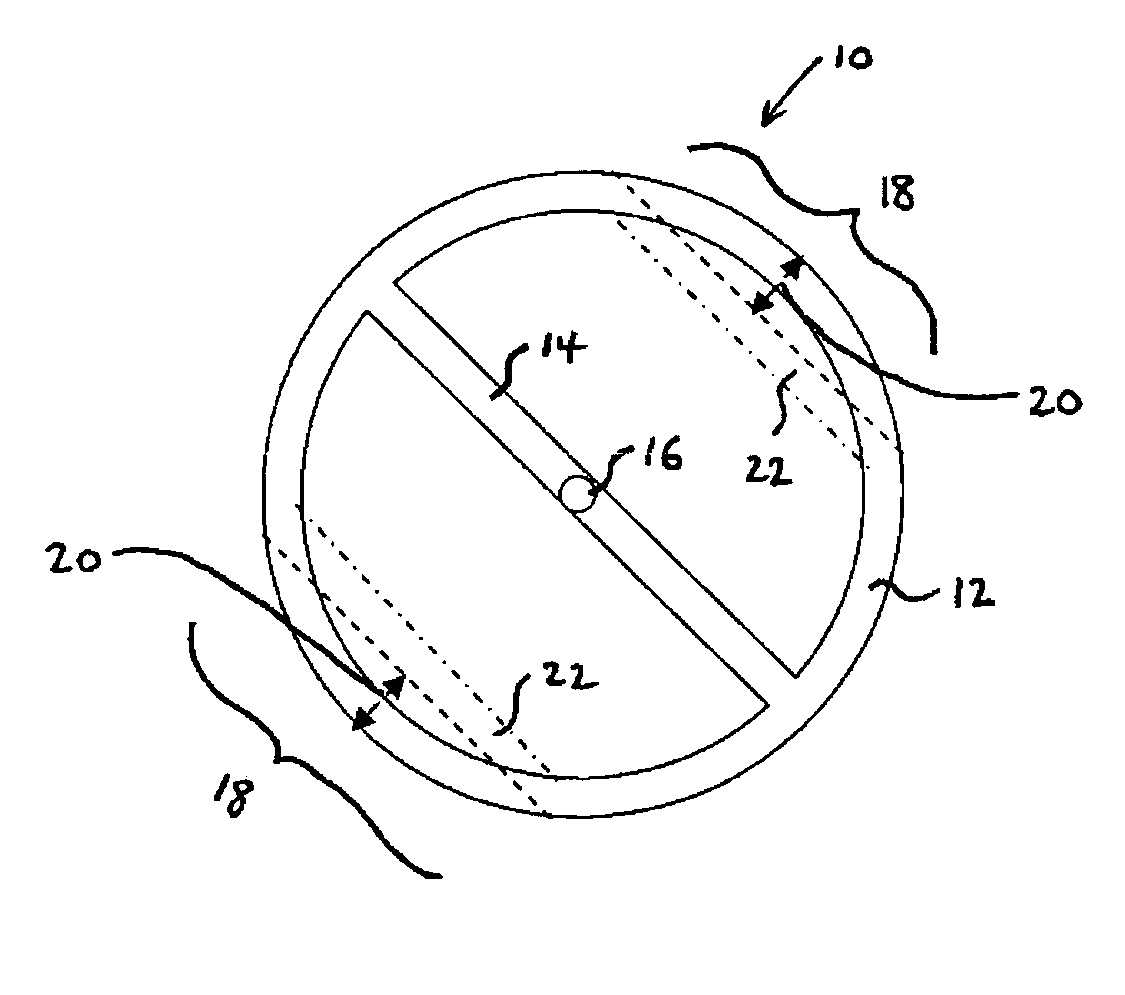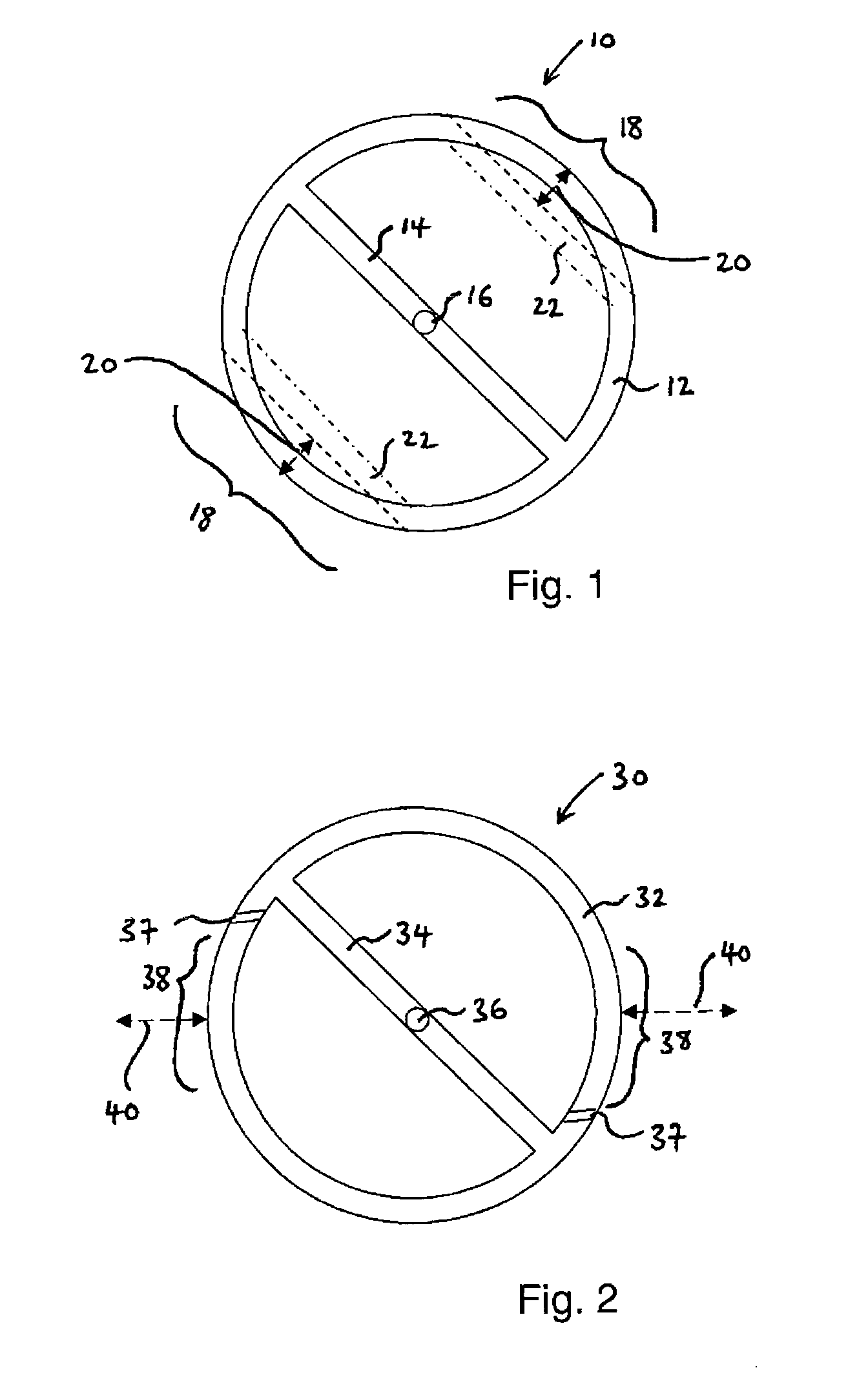Thermally compensating balance wheel
a balance wheel and thermal compensation technology, applied in the field of balance wheels, can solve the problems of young's modulus stability, negative effects on the precision (isochronism) of these devices, and oscillation period variations, etc., and achieve the effect of reducing drag
- Summary
- Abstract
- Description
- Claims
- Application Information
AI Technical Summary
Benefits of technology
Problems solved by technology
Method used
Image
Examples
Embodiment Construction
; FURTHER OPTIONS AND PREFERENCES
[0062]Shape Memory Material
[0063]FIG. 1 is a plan view of a balance wheel 10 which incorporates a thermal compensation arrangement according to the first aspect of the invention. The balance wheel 10 has a generally circular rim 12 with a cross member 14 extending across a diameter thereof. At the centre of the cross member 14 there is an upstanding balance staff 16 to which a balance spring (not shown) is attached. In this embodiment, the rim includes two compensation portions 18 symmetrically arranged around the balance staff 16. The two compensation portions 18 are substantially identical to one another, so the symmetrical arrangement ensures that the balance wheel 10 remains in equipoise.
[0064]Each of the compensation portions 18 comprises shape memory material, which in this embodiment is a shape memory alloy of nickel-titanium. The compensation portions 18 are pre-programmed to exhibit a two-way shape memory effect whereby they move in the dire...
PUM
 Login to View More
Login to View More Abstract
Description
Claims
Application Information
 Login to View More
Login to View More - R&D
- Intellectual Property
- Life Sciences
- Materials
- Tech Scout
- Unparalleled Data Quality
- Higher Quality Content
- 60% Fewer Hallucinations
Browse by: Latest US Patents, China's latest patents, Technical Efficacy Thesaurus, Application Domain, Technology Topic, Popular Technical Reports.
© 2025 PatSnap. All rights reserved.Legal|Privacy policy|Modern Slavery Act Transparency Statement|Sitemap|About US| Contact US: help@patsnap.com



